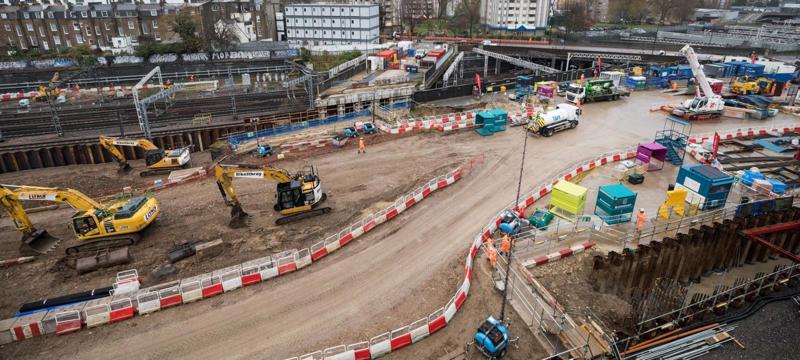
Keeping HS2’s Euston station would leave the high-speed route “working at half capacity forever”.

Keeping HS2’s Euston station would leave the high-speed route “working at half capacity forever”.
That’s the view of rail consultant William Barter, who made the comments after Rail Minister Lord Hendy said the station will have six platforms.
The size of the station was confirmed by the Rail Minister, Lord Hendy, in response to a written question from Labour’s Lord Berkeley.
The life peer asked: “How many trains per hour at Euston are planned to be HS2 trains in future, and how many station platforms are they expected to occupy.”
In response, Lord Hendy said: “The New HS2 station will consist of six platforms, which can support up to 10 HS2 trains per hour. No decisions have been made on the train services that will run when HS2 opens, and this will be subject to future consultation.”
It’s the first time a member of the Labour government has confirmed the size of Euston’s HS2 station after taking office in July before confirming in October that tunnelling to take the line from Old Oak Common to Euston would go ahead.
The original plan was for an 11-platform station built in two phases, with the first six platforms opening in conjunction with the completion of phase one and the remaining five with phase two.
This was reduced to ten platforms in October 2021 before Rishi Sunak cut that back to just six in October 2023 when he scrapped phase 2a to Crewe and Manchester.
Barter, who consulted HS2 Ltd, said Hendy’s answer didn’t say anything that wasn’t already known.
However, he said it “left us with some uncertainty”, telling RAIL that the Rail Minister has not said whether government has decided whether it’s six platforms “forever” or if it leaves the potential for more platforms to be added in future.
Barter said if HS2 doesn’t expand and just takes existing long-distance trains from the current Euston station, that will become “the most underused station in London”.
“If it’s just six platforms you have just left it working at half capacity forever,” he said. “You have ruled out relief for the East Coast Main Line and West Coast Main Line. You’ve ruled out competing with air from London to Glasgow.
“If you have a 200-metre train you won’t have the capacity to shift passengers from air even if they want to. It’s short-term thinking with no thinking of the strategy behind HS2 in the first place.”
Barter added that while he doesn’t blame the government for not pushing ahead with any plans for HS2 north of Birmingham while costs in phase one are controlled, he said that shouldn’t stop the government from thinking about it.
Engineer Gareth Dennis said the decision would “kneecap our railway network for a generation or more, for the sake of only a per cent or two of overall project costs”.
He told RAIL: “The rest of HS2 will be built, if not by this government, then by a future one. Losing the opportunity to build a large, spacious and resilient station in London will have massive impacts on the ability to run local and commuter services in the Midlands and the North for decades.
“This must be reckoned with by this government, and they must be honest with the people outside of London that will lose out if Euston is not built to unlock the maximum possible capability of our emergent high-speed network.”
In its six-monthly HS2 report to parliament, the government said the Department for Transport (DfT) has been working “to find an affordable and viable design scope for the station and associated infrastructure”.
This work is being carried out alongside members of The Euston Partnership: London Borough of Camden, the Greater London Authority, Transport for London, Network Rail, HS2 Ltd, Lendlease and the West Coast Partnership.
Login to continue reading
Or register with RAIL to keep up-to-date with the latest news, insight and opinion.


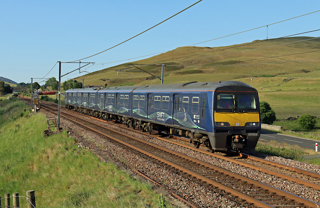
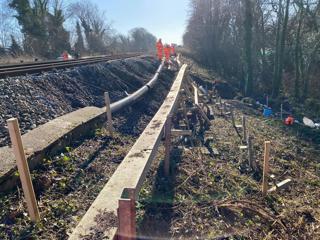
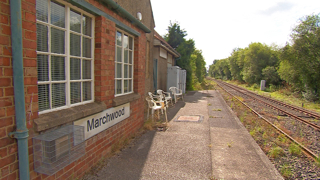
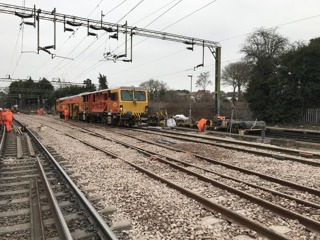
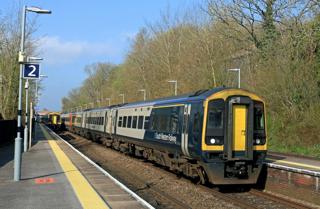












Grace - 18/12/2024 16:52
Most professional railway people know that we need a new line to unlock capacity of our 3 existing north-south trunk routes, the simplest way to unlock a large amount of that is to remove all of the fast trains and run them together on a fast route. Unfortunately consultants and dreamers wanted the world's fastest railway for a rather small country, this is very expensive to build will be equally expensive to maintain (slab track is great until you need to replace it!). Just look at the farce of the new ECML timetable, the WCML is equally challenged. HS2 was never the railway we needed, and now it has proven itself to be just TOO expensive, what an opportunity lost!